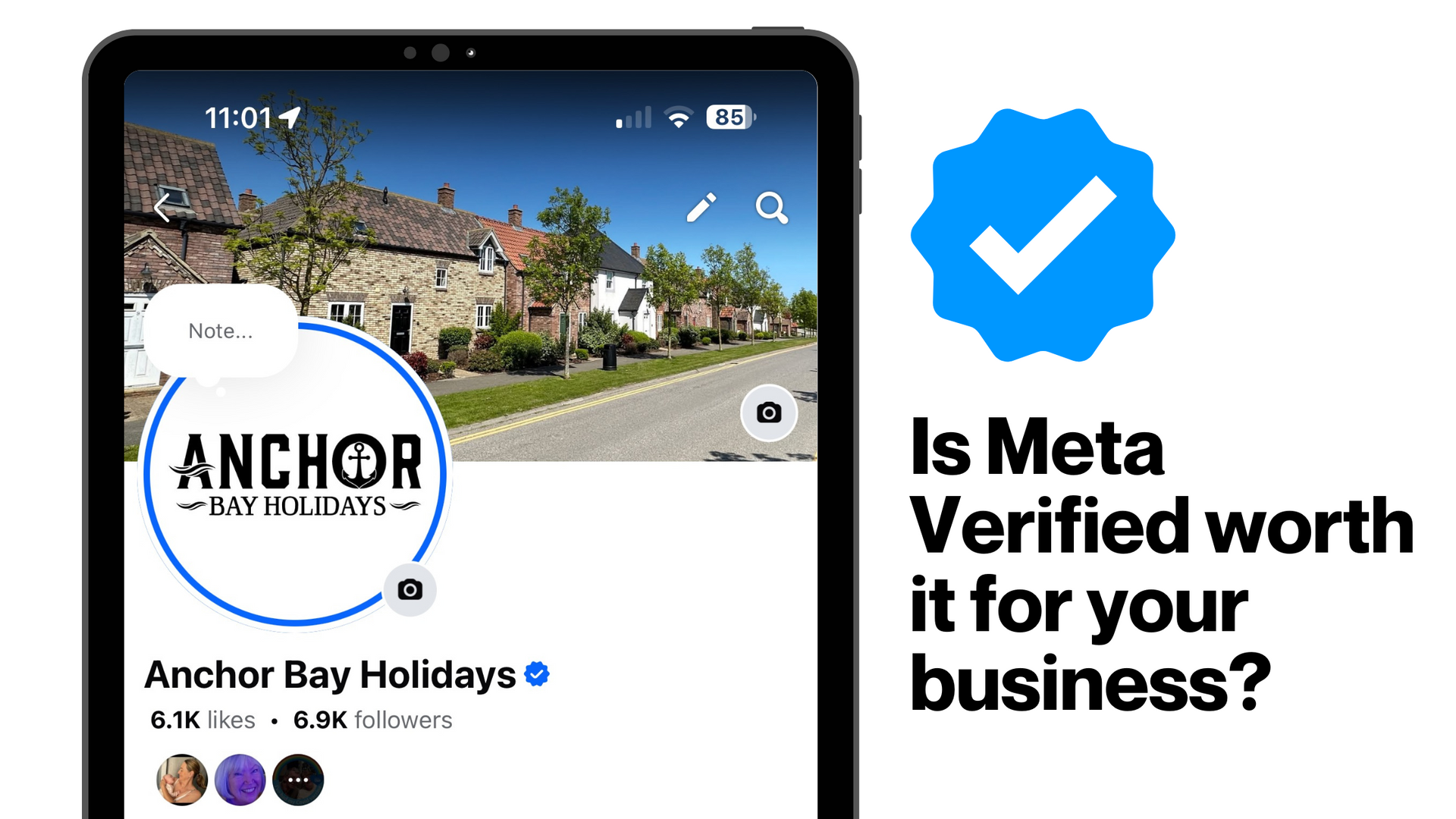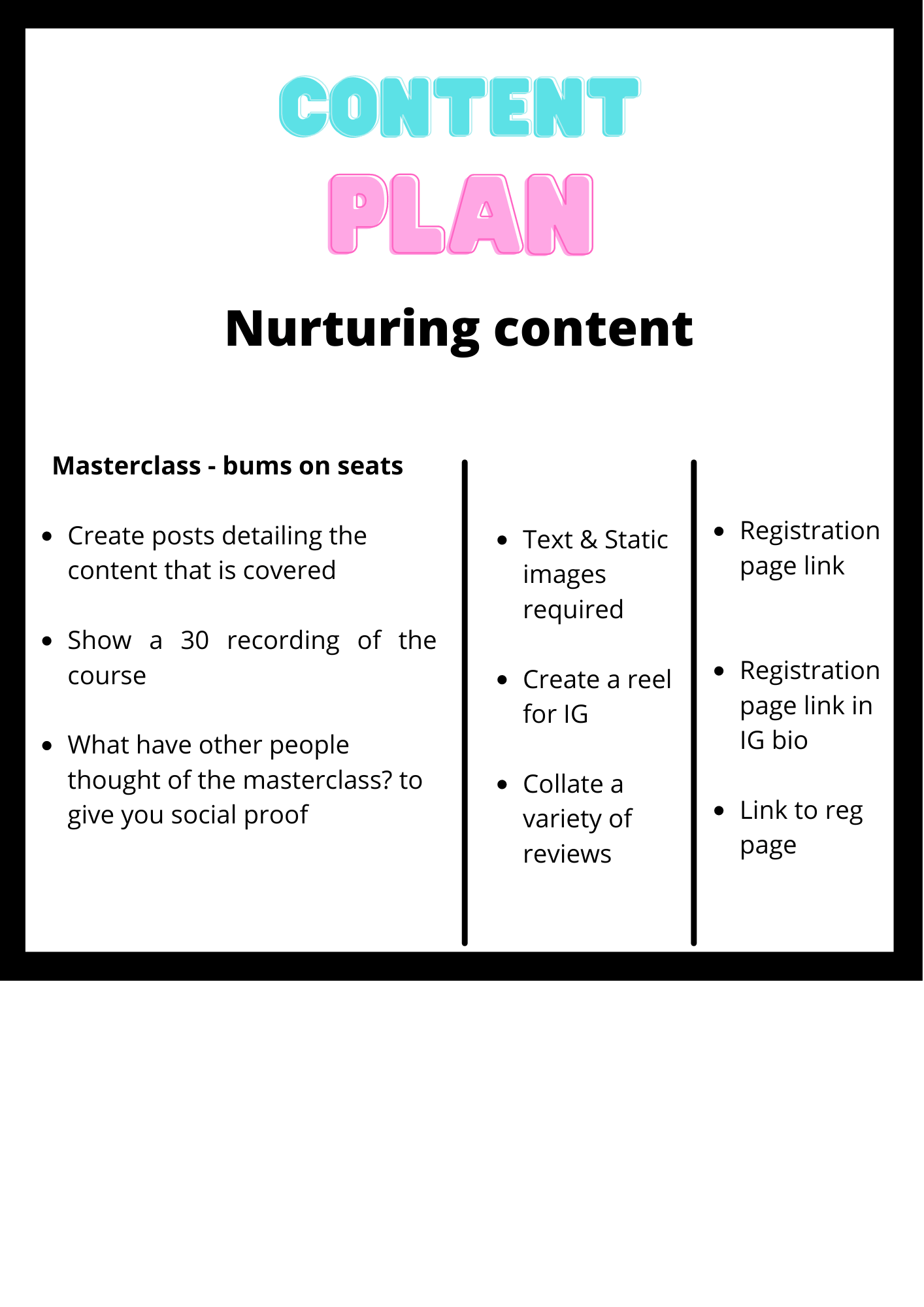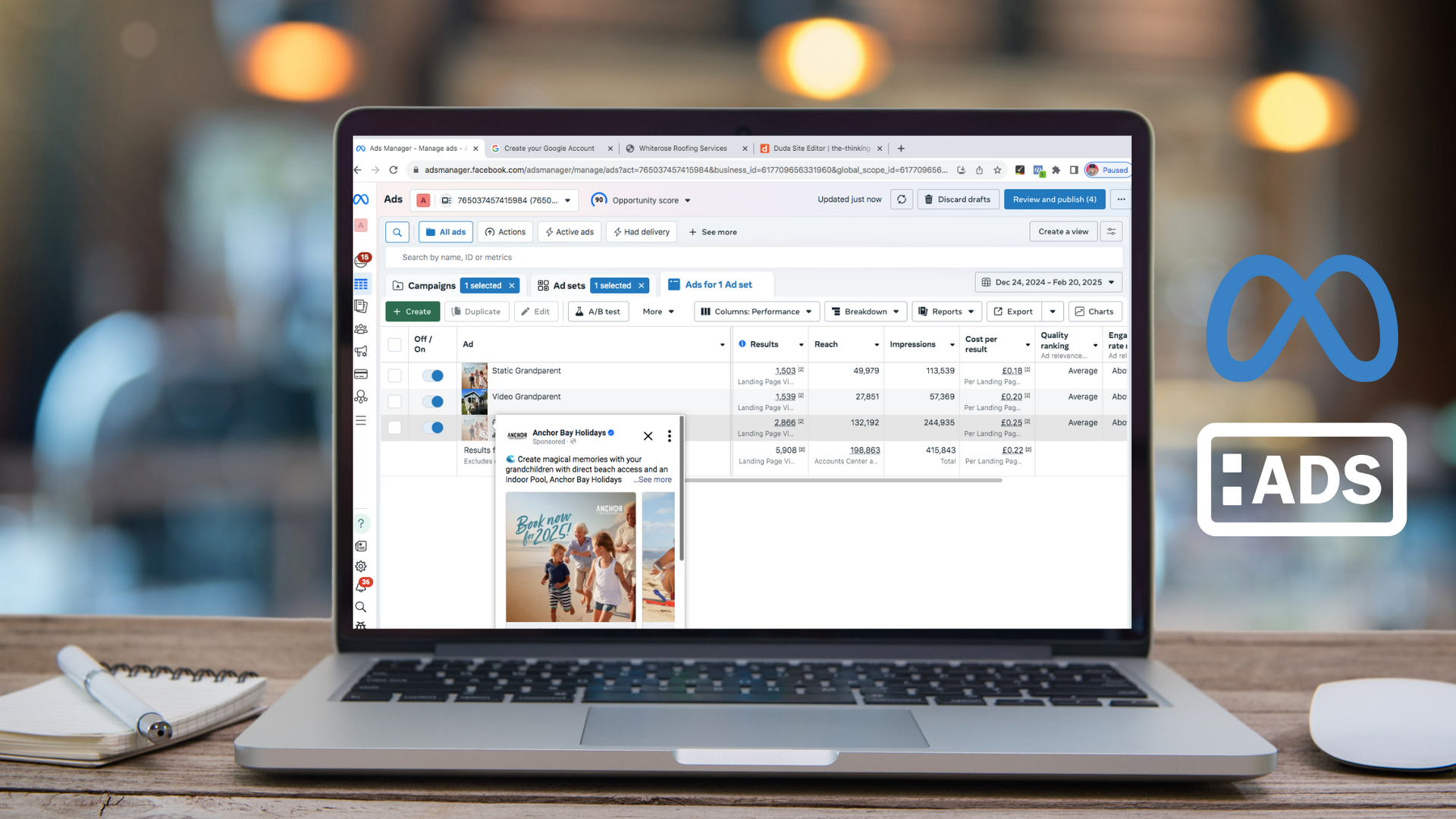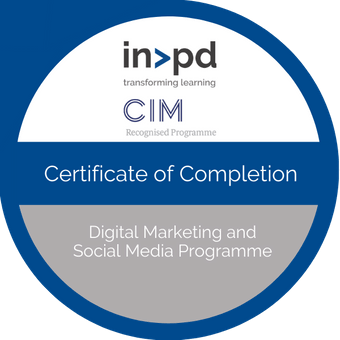How to craft a social media plan in 5 manageable steps…
Have you been posting without much success and were wondering how to get your business noticed across the busy social media feeds? Then look no further, our 5 manageable steps should help you along.
1. Summarise your goals
Think about what you want to achieve in your business over the coming month/quarter. Is it to gain awareness of a new product/service or get bums on seats to a monthly masterclass? What does the anticipated results look like for each of your goals?What are the timings, allocated budget and resource do you have to achieve each of the goals?
For e.g. I run a monthly masterclass and I’d like to get at least 10 people booked on each month. I am willing to spend my time posting to gain organic sign-ups and approx. £100 a month on paid ads, and the timings are around all the course dates ….
2. Define your target audience
Do you know who you target audience is? To help you work this out complete my customer persona checklist below.
By knowing exactly who you are talking to, it really helps you focus in on your content and messaging. Simply because both have to be aimed at the customer.
Does your content help them with their day-to-day problems and pain points?
Is your content relatable to them in their situation?
So, for me: My training courses are aimed at small business owners, one-man bands, sole traders etc. who want to do their own social media or cannot afford to pay me to manage it for them. Their pain point is they are too busy doing everything else in the company and are time poor and need free tools and my free masterclasses to get them started. They have a limited budget, and location wise they can be Nationwide (as my courses are all online).
Hubspot, have a great tool called Make My Persona, click here and start to create and name your persona.
I'd print the pdf off and keep it on show , this will be a great reminder of who are you talking to when creating your content.
3. Analyse your competitor’s social media presence
List up your top 3 competitors and check them out on their website, their social media platforms, look at their reviews, their staff profiles on LinkedIn etc. and analyse the following:
- What are they doing well?
- What are they doing not so well?
- Do you have a competitive edge on some products/ services?
- What hashtags are they using on their posts?
- What is their content like, is it factual, informative, engaging?
- Who are their followers?
The below chart might help you carry this analysis out.
Feel free add extra columns to make the analysis more relevant and in-depth.
4. Audit yourself
Take a step back and look at how others see your company online.
Check out the following:
- What’s working and what’s not working? Go onto each platform and check out your analytics or ‘insights’ as some of the platforms call them and analyse the following:
o The type of post that is working/not working for e.g., text only, static image, animation, video, reel, is it memes, growth content, nurture content etc. (all will become clear in point 5.)
o The time of day with what’s working/not working etc– as this will make a difference too and will guide to when to post in future.
- How consistent are you with your content, it is all on-brand, carry the same message, call to actions etc.
- Which networks are your preferred audience most active on?
- How does your strategy compare to your competitor’s?
Alternatively, we can do this for you, as we carry out FREE social media audits, if you'd like to arrange a FREE social media audit, click here.
5. Create your content
By now you should have the following to hand:
1. Your company goals of what you need your social media to achieve for you.
2. With predefined deadlines and budgets
3. A knowledge of what you’re competing against
4. Know what your customer persona wants to see and hear
5. What type of content that makes your audience tick?
6. What platforms they are on and the approx. time of day
7. A vision of how you want to brand your own content across your socials.
With all of this in mind you can start listing all the types of content that you need to start creating along with your preferred call to actions.
We recommend you have 3 separate pages, one for each of the different categories of content, as shown below.
1. Growth content
2. Nurturing content
3. Money content
We recommend you post 40% growth and 40% nurturing and 20% money content.
See below as to the differences.
1. Growth content
The is content that will help you grow your audience on social media, with new contacts that have just come across your posts, feed, bio etc.
Give them something that will make them like and comment on your post and hopefully follow your page. E.g., problem-solving tips, a fact sheet, a 30-day content planner!
2. Nurturing content
Nurturing content will help your followers get to know, like and trust you.
Tell them why they need to buy from you. Where did you get all your experience from, be knowledgeable and share some snippets like in a masterclass or through stories, share reviews?
Start building up the trust through these types of posts.
3. Money content
Money content are the posts where you sell sell sell!
This is where you provide direct links to purchase your product or services. Always include a call to action that takes them to the shop or asks them to direct action (buy now).
So, you’ll end up with something like this
Here are a few ‘content’ related blogs we have written recently, they might be worth a read, if you’re scratching your head right now:
5 tips to help you break the monotony of creating your social media posts
Marketing plan v’s content plan
To help you along your content journey, you might appreciate downloading our FREE on-demand masterclass, Social Media Content Made. To read more and to register for the link, click here
We really hope these 5 steps help you along your social media journey, and remember our monthly tip, tricks, hacks & masterclasses will only add to enhance your presence.
If you have any questions or feedback, we’d love to hear from you, just ping us over an email, lisa@thethinkingcap.co.uk





How you can effectively use LinkedIn for free to boost your marketing and grow your podcast audience




I hope you enjoyed reading this blog post.
If you’d like further help, let’s jump on a call and have a chat.
CONTACT
LOCATION
Leeds office
All Rights Reserved | The Thinking Cap






